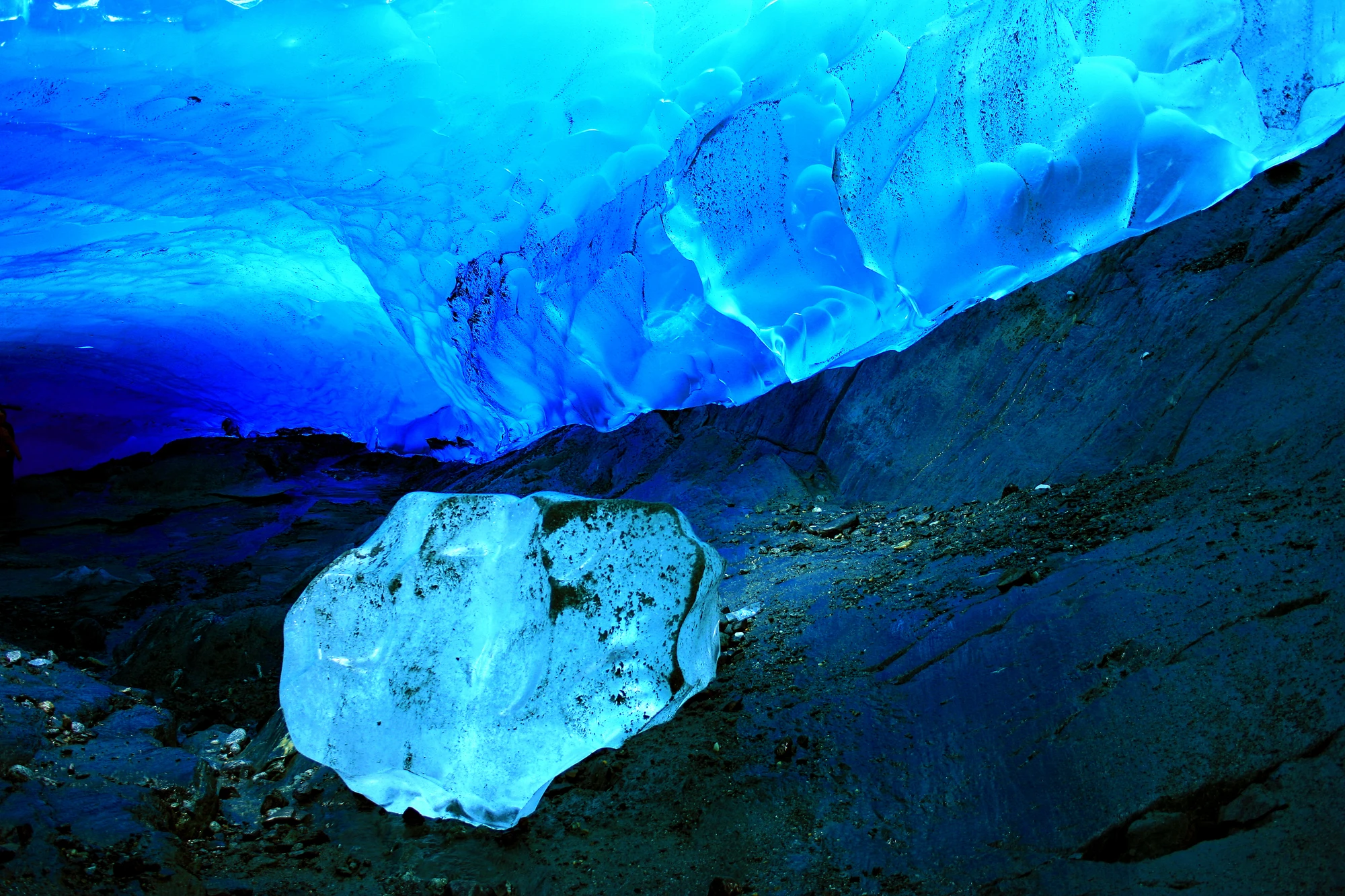Beneath the Blue: Exploring an Ice Cave in Mendenhall Glacier
Step inside a living glacier—how to safely experience Mendenhall’s blue ice cathedrals
Photo by Sean Lema
Shutterstock (ID: 108741965)
You step off the skiff onto a shore of glacial silt and silence. Ahead, the ice throat of a cavern yawns royal blue, its walls banded in layers the color of old glass. Water drips from a ceiling you can almost feel breathing—thin, patient movements that remind you this place is alive and changing. The air tastes of cold metal and river, and for a few heartbeats you move through two worlds: the emerald spruce of the Tongass Forest at your back and a cathedral of ice in front.
Trail Wisdom
Book a certified guide
Ice caves are unstable; always go with a local outfitter who provides helmets, crampons and safety briefing.
Mind your timing
Visit mid-summer (July–August) for more stable cave access and longer daylight hours.
Dress in layers
Moisture-wicking base layers, an insulating mid-layer, and a waterproof shell keep you warm and dry around melting ice.
Protect your camera
Use a small, weatherproof bag and bring spare batteries—cold drains power fast and condensation forms when warming gear back up.
Local Knowledge
Hidden Gems
- •Nugget Falls viewpoint at the end of the short trail near the visitor center
- •Quiet beaches on the lake’s west shore for sunrise reflections
Wildlife
bald eagle, harbor seal
Conservation Note
Glacial retreat is ongoing; choose small-group operators, follow Leave No Trace, and support local conservation programs to minimize impact.
Mendenhall Glacier was named after Thomas Corwin Mendenhall and has been a focal point of Juneau’s natural heritage and scientific study.
Seasonal Guide
spring
Best for: early-season ice formations, fewer crowds, wildflower emergence
Challenges: unstable meltwater channels, variable access, cold nights
Spring opens the melt cycle; caves form and shift rapidly—only seasoned guides should attempt visits.
summer
Best for: stable access windows, long daylight, kayaking the lake
Challenges: higher visitor numbers, icefall risk with heat spikes
Summer is the optimal season for guided ice cave trips and boat approaches—expect the calmest conditions.
fall
Best for: dramatic light, fewer tourists, wildlife viewing
Challenges: early freezes create hazardous ice bridges, shortening days
Cooling temperatures change ice structure quickly—caution and local guidance are essential.
winter
Best for: aurora viewing nearby, quiet solitude, snow-covered landscapes
Challenges: extreme cold, restricted access, unsafe caves
Winter conditions typically make cave entry unsafe; focus on viewpoints from trails and visitor center exhibits.
Photographer's Notes
What to Bring
Waterproof shell jacketEssential
Blocks spray from meltwater and keeps you dry during wind and rain.
Crampons (usually provided by guide)Essential
Provide traction on blue ice and are essential for stable footing.
Insulated gloves with gripEssential
Keep hands warm and functional for scrambling and handling gear.
Waterproof camera bag and spare batteries
Protects gear from spray and ensures you don’t miss shots as batteries die fast in cold.
Common Questions
Do I need a guide to enter an ice cave at Mendenhall?
Yes—entering ice caves is dangerous due to instability and hidden hazards; guided tours are the safe and legal option.
How long is a typical ice cave tour?
Most guided excursions last 3–6 hours total, including approach, briefings, and cave time.
Is the ice cave accessible to kids?
That depends on age, fitness and outfitter policies; many companies allow older children with parental discretion and proper gear.
What should I wear for an ice cave visit?
Layered synthetic clothing, a warm mid-layer, waterproof shell, sturdy hiking boots, and warm gloves are recommended.
Can I kayak to the glacier instead of hiking?
Some tours include a kayak or skiff approach to the lake; operators will advise based on conditions and group skill.
Are the caves permanent?
No—these formations are seasonal and change year to year, so a cave open this season may be altered or closed in the next.
What to Pack
Waterproof shell (wind and spray protection); insulated gloves (warmth and grip); crampon-compatible boots (traction on ice); spare camera batteries (cold drains power).
Did You Know
Mendenhall Glacier is approximately 13 miles long and has retreated significantly over the past century, revealing new shorelines and exposing ice caves.
Quick Travel Tips
Drive time: 20–30 minutes from downtown Juneau; check visitor center for conditions; book tours in advance during summer; bring cashless payment for local outfitters.
Local Flavor
Juneau’s seafood—halibut, salmon and king crab—pairs well with glacier-viewing days; look for Tlingit cultural exhibits at local museums and support Indigenous-guided experiences.
Logistics Snapshot
Where: Mendenhall Glacier, 12–15 miles from downtown Juneau. How: Guided glacier-hike tours (3–6 hrs). Best time: July–August. Essentials: guide, crampons, helmet, waterproof layers.
Sustainability Note
Choose operators that follow Leave No Trace, minimize motorized approaches, and contribute to local conservation; avoid entering caves outside guided routes to reduce risk and environmental damage.

